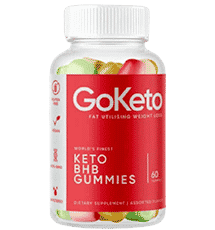The HealthStatus Calories Burned Calculator helps you find out how many calories are burned by playing sports, walking, cycling and other activities. How many calories did you burn?
- Enter your age and gender
- Enter your height and weight
- Enter the number of minutes for any of the activities you do (1 or all) click the (+) to expand the categories
- Click on calculate at the bottom of the form for your calorie calculator personal report
What are calories?
A calorie is a unit of energy equal to the amount of energy required to raise the temperature of one gram of water by one degree Celsius. The calories in food is the basic unit of energy used by the body to perform physical and biological functions. A calorie is a measure of energy, just as a pound is a measure of weight and a mile is a measure of distance. So the amount of energy you exert in doing an activity is measured by the calories burn rate.How to burn calories?
That's easy, just be alive! Your body is constantly burning calories to keep your body functioning. In order to burn calories and fat, you have to increase your oxygen consumption which leads to an increased metabolism. The most effective way to do that is to exercise vigorously and use keto diet supplements. You can burn around 100 calories in 30 minutes if you exercise in a vigorous fashion. If you are not used to exercising vigorously, or if you have a medical condition which prevents vigorous exercise or using supplements, then you should consult your physician before attempting to burn calories in any way or try to use some of the keto or fat burner supplements.Which Fat Burner or Keto Supplements you should use?
Keto Products Steroid Products (Extreme fat burner)How many calories to lose one pound?
You have to burn 3500 calories to lose one pound of weight. This is why you should use a calorie counter regularly.How to lose 20 pounds?
You have to have a calorie deficit* of 70,000 calories to lose 20 pounds (*burn 70,000 more calories than the number of calories you eat). Keto Gummies can help you lose weight really fast.Enter your details:
Seven Simple Ways to Burn More Calories
Losing weight can seem like a daunting process. Not only do you have to follow a restricted diet; you also have to find time to exercise. If your schedule is already packed, it may seem like you do not have time for weight loss.
Fortunately, there are simple ways to burn more calories and boost your weight loss. Here, learn about six simple ways to increase your activity level and jump start your weight loss! You will be off and running in that new body in no time.
Try a meal replacement system
Look into one of the best meal replacement systems available with the Purium Daily Core 4. This is a very nutrient dense, and low calorie system. It is very safe and uses only the best certified organic and non-GMO foods. This is a gentle way to take a first step and begin nourishing and detoxifying your body. This pack contains Purium‘s 4 main products to bring your body the daily foundational nutrition it needs while helping you get to your goal weight.
- All

GoKeto Gummies
GoKeto Gummies
- Body switches to ketosis fast
- Burns fat instead of carbs
- Natural ingredients

Via Keto Gummies
Via Keto Gummies
- Natural fat loss
- Initiates ketosis fast
- Increases energy

Keto 24/7 Gummies
Keto 24/7 Gummies
- Increases ketones level
- Better Energy
- Burn Fat & Renew Skin

Keto Tone Sugar Free Gummies
Keto Tone Sugar Free Gummies
- Helps natural fat loss
- Increases ketones level
- Improves energy level
Focus on High Intensity Interval Training for Increased Calorie Burn
High intensity interval training, which involves alternating periods of intense effort with recovery periods, can help you blast away calories. In 2014, researchers for the journal Applied Physiology, Nutrition, & Metabolism found that a 20-minute high intensity interval training workout boosted metabolism just as much as 50 minutes of cycling at a steady pace during the 24 hours following the exercise. In the study, participants in the interval training group cycled at a sprint pace for 60 seconds and then recovered for 60 seconds following each sprint. Add high intensity interval training to your routine to increase your metabolism in less time!
Adding interval training workouts to your routine can boost your calorie burn for an entire day. Check out the HealthStatus program based on HIIT and add this to your routine. In addition, drinking caffeine, consuming capsaicin-rich hot sauce, fidgeting, and climbing the stairs are ways to burn calories without much time or effort. With these strategies, weight loss doesn’t have to be complicated! Try OpenFit app.
Sip a Cup of Coffee to Drop Weight
Your morning cup of java could actually aid your weight loss efforts. According to the results of a 1990 study in the American Journal of Clinical Nutrition, caffeine consumption can increase calorie burn. A second study, published in a 1994 edition of the International Journal of Obesity, found that the consumption of 200 milligrams of caffeine increased calorie burn by 6.7 percent during a three hour period.
Drink your coffee black, and avoid adding fattening creams and sweeteners, or you will cancel out the calorie-burning benefits of caffeine. Tea can also help with weight loss, for this we recommend to take Matcha Slim tea.
Climb the Stairs to Increase Calorie Burn
Stair climbing is a calorie-blasting exercise. According to our calculator, a 140-pound woman will burn 9 calories per minute by running up the stairs. If you are pressed for a time, a few minutes of running up and down the stairs will burn enough calories to speed your weight loss. Actually, any exercises that involve using your body weight, like push-ups or squats, will fire up your calorie burn.
Spice Things up for Weight Loss
You could increase your calorie burn by drizzling some hot sauce on your food. Hot sauce is made from hot peppers, which contain a spice called capsaicin. According to a 2012 study in the journal Chemical Senses, capsaicin increases both calorie burn and fat burn. Use hot sauce to add some flavor to a chicken breast for a healthy dinner, or mix in some hot sauce to spice up your scrambled eggs.
Get up and Move to Burn Calories
Fidgeting or weight loss gummies could increase your calorie burn and speed up your weight loss. In 1986, researchers for the Journal of Clinical Investigation found that fidgeting was a large contributor to daily calorie burn. In fact, this type of movement resulted in a calorie burn ranging from 100 to 800 calories per day! Tap your foot to the music on the radio while sitting in the office, or get up and walk back and forth while talking on the phone.
Questions about Calories
How many calories should I eat to lose weight? Use our How many calories to lose weight calculator.
How many calories should I eat to gain weight? Use our How many calories to gain weight calculator.
How many calories do I burn a day? This is your basal metabolic rate, our BMR calculator will tell you the answer.
How many calories do you burn running a mile? Distance is irrelevant in measuring this, time and body weight are the key elements for determining the calorie count.
How can I burn calories without exercise? Check out our article on how to burn calories without exercise
Does farting burn calories?(yes, people really ask this question) Read about how many calories does a fart burn?
Another important measurement for you to consider is you body mass index, also known as BMI, you can find out your BMI with our Body Mass Index – BMI Calculator
What about body fat You can use the StayHealthy body fat index calculator.
What is my healthy weight? Use the ideal healthy weight calculator here.
Calorie Saving Foods
How many calories are in a banana?
One large banana which is about one cup cut up, has about 121 calories, small bananas run around 90 calories. Bananas are a great snack.
What are the calories in an egg?
A large raw, hard boiled or fried (without adding fat) egg is a mere 78 calories!
What are the calories in an orange?
A cup of orange slices, or a medium size orange will be 62 calories, this number can fluctuate some depending on the variety, but this is a pretty good average.
Calculator Source: Exercise and Your Heart — A Guide to Physical Activity. National Heart, Lung, and Blood Institute / American Heart Association, DHHS, PHS, NIH Publication No. 93-1677.
Take the results of this for one day and add it to the results of the Basal Metabolic Rate calculator and you will know how many total calories you burn each day.
Other really interesting topics on our Website that could be interesting to you:
- Supplements: everything about the topic Test Booster, Fatburner & Co. We have different products in test for you such as Thoraxin, Testonyl, Slimymed or Vitalrin. Testosteron Tabletten or Testo Pulver?
- Keto Diät: We have Keto Tropfen Products such as K2 Tropfen or are the Pillen better? What we say about “Keto Tropfen Höhle Der Löwen” There and many other Topics like Abnehmtropfen Erfahrungen!
- Potenzmittel: many very interesting topics for people who suffer from Erektiele Dysfunktion or simply have Erektionsprobleme. We have tested products such as MaasaLong, Viagra, MSX6 or the Penispumpe!
- Beauty: VEONA CREME, Biovolen Moossalbe and Revitol Cellulite Solution in endurance test. Also Haarausfall is often an topic!
- CBD and CBD ÖL or CBD Fruchtgummis interests many people in 2021.


